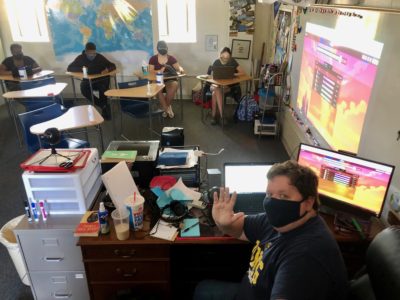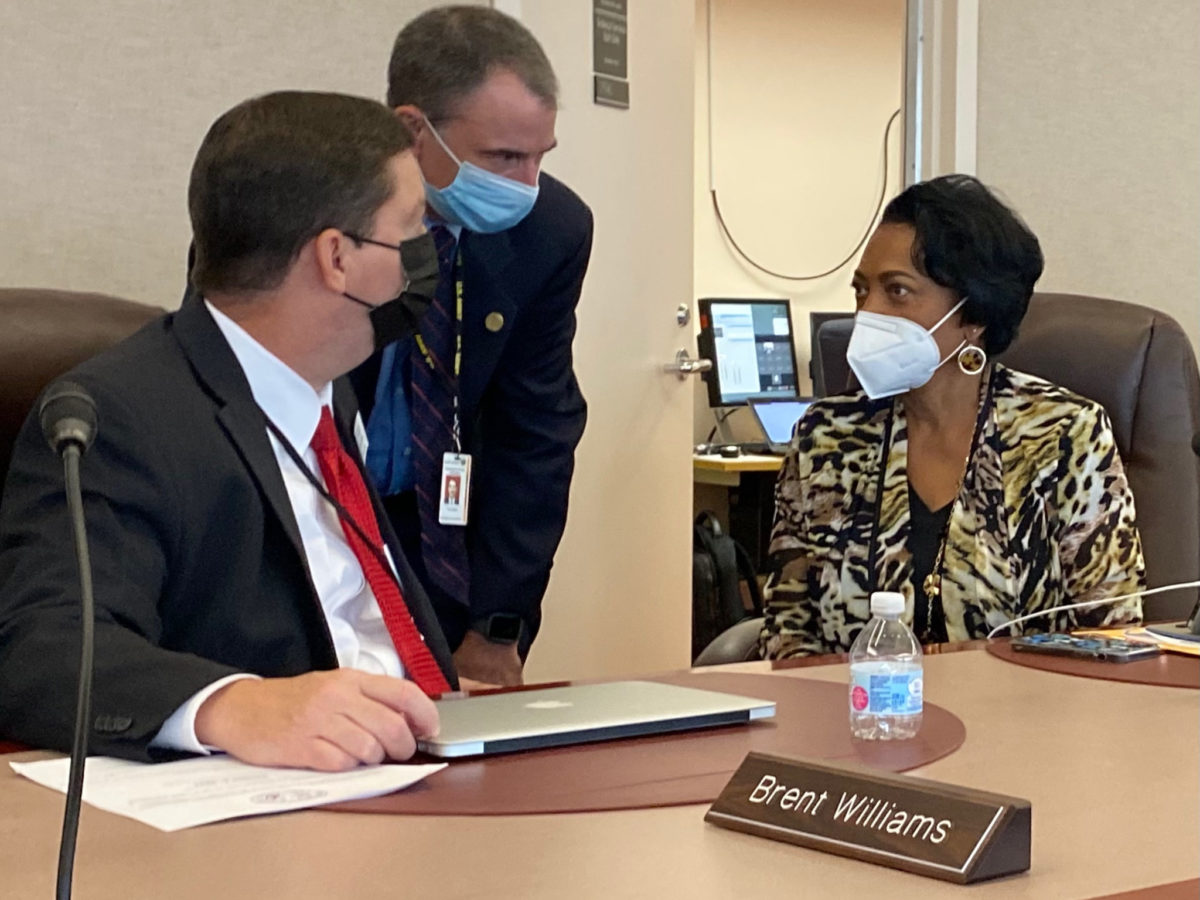

|
|
The State Board of Education met for its monthly meeting Oct. 6-7 and heard about everything from reading scores to how charter schools are funded, as well as the strife facing local boards of education.
Read Rupen Fofaria’s breakdown of the reading scores here.
Here’s what else happened during the October meeting.
COVID-19
The State Board of Education heard a COVID-19 update from Betsey Tilson, the state health director.
When it comes to the four trends tracked by the state — daily cases, positive tests, daily number of people hospitalized, and percentage of emergency department visits for COVID-19-like symptoms versus previous years — all the trends are down, according to Tilson. But Tilson also pointed out that community transmission is still high in all counties in North Carolina.
“The good news is our trends and our rates are coming down, but we are not out of the woods yet,” she said.
Below is the number of K-12 reported clusters as of Sept. 27, 2021, as reported by Tilson.
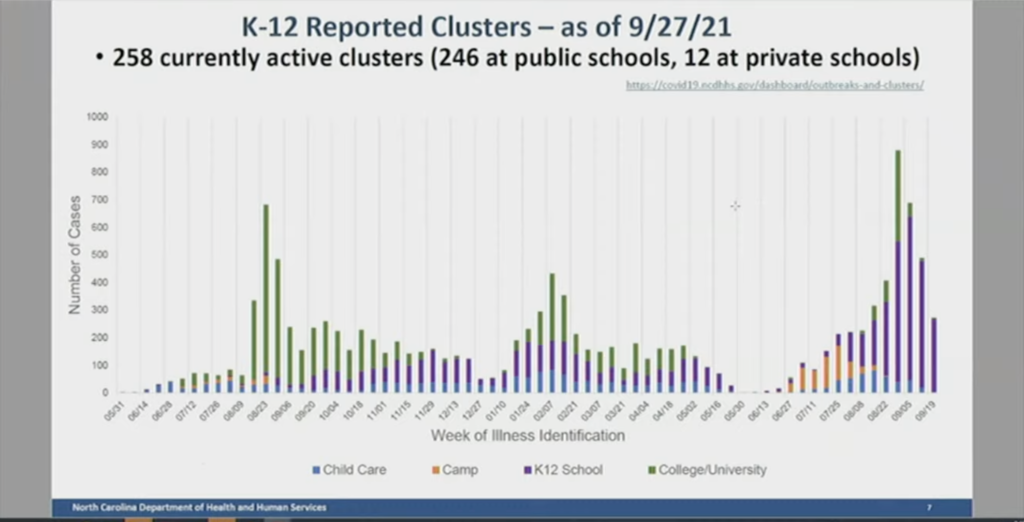

Tilson also showed comparisons between districts with mask mandates versus those without. Of the three counties without mask mandates in schools, there was an average of 17.2 clusters per 100 schools in those counties between Aug. 26 and Sept. 26. In the 89 counties with “consistent mask mandates,” however, 35 counties had no clusters, and the average in the other 54 was 6.9 per 100 schools.
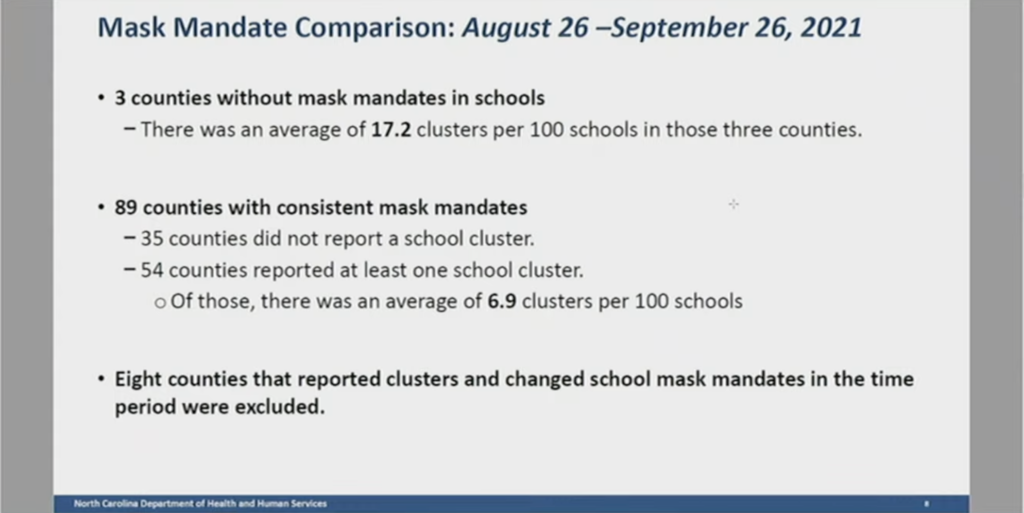

Later in the meeting, Board member Amy White pushed back on the metrics as presented, asking about comparisons of students hospitalized and dying as a result of COVID-19.
Tilson said she didn’t have those metrics immediately available and added that because death rates and hospitalization rates among children were so low, any data would likely not be reliable.
White said a full picture was necessary if leaders are going to make informed decisions.
“I’m not a scientist, but at the same point, there are many cases — as you have said many times — that are asymptomatic. So counting cases can inflate and incite action sometimes that is not necessary,” White said. “So I think it’s very important for us to look at impact.”
Tilson added that children are “efficient spreaders” of COVID-19, so infection rates among children should be considered in that context.
While the comparison data cited by Tilson included three counties where masks were optional in schools, she also pointed out that as of Oct. 5th, the number of mask-optional districts had grown to five.
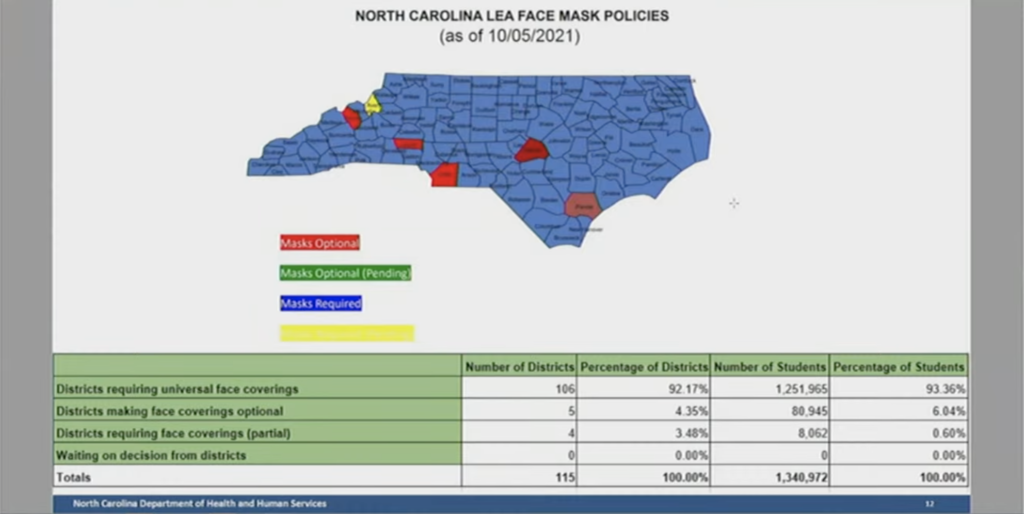

She also provided the following slide that shows vaccination numbers by age.
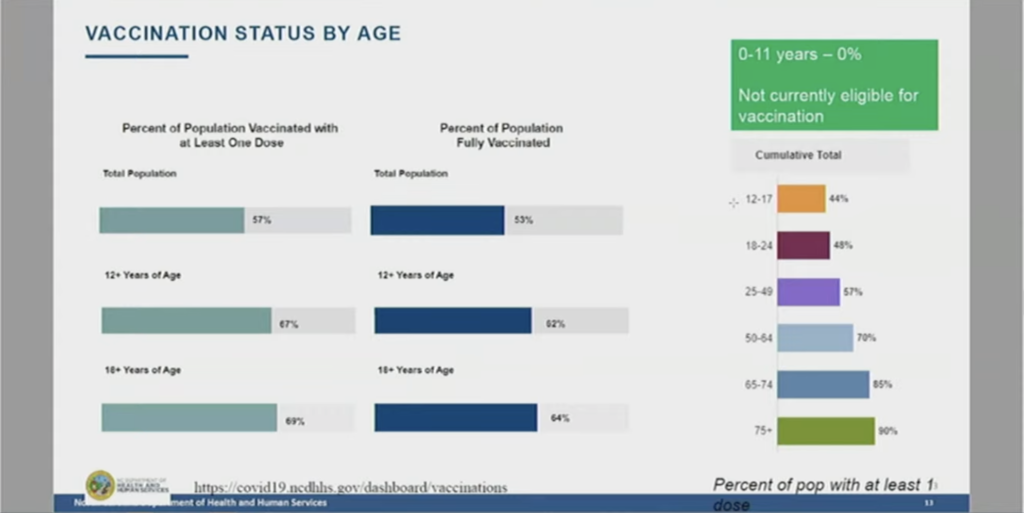

Tilson shared updates to the StrongSchools NC Public Health Toolkit, which gives districts guidance on dealing with COVID-19. She also indicated that the state Department of Health and Human Services has approved a study by the ABC Science Collaborative of “test-to-stay” as an alternative to current quarantine measures.
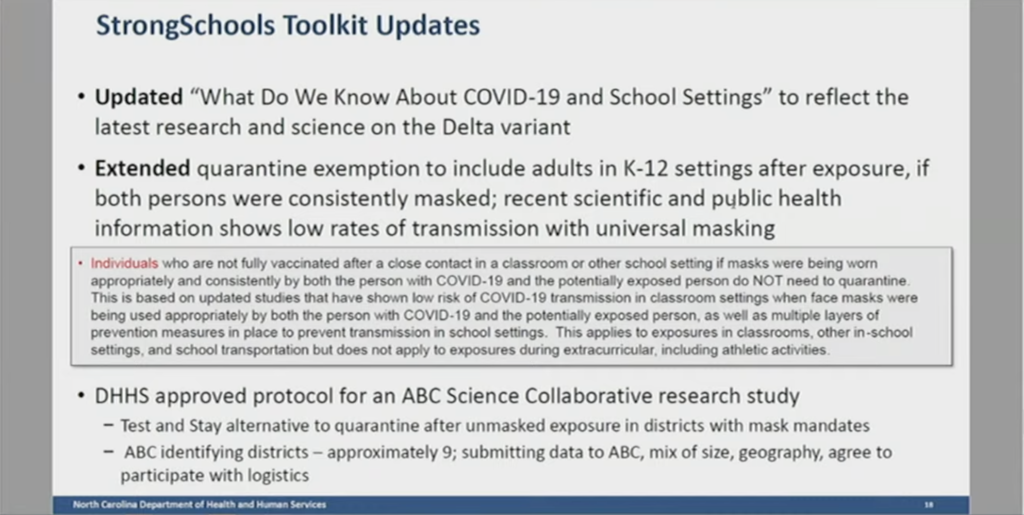

Following Tilson’s presentation, the Board also heard a presentation on responsibilities of local boards of education when it comes to things like contact tracing and quarantine, items which some local boards have pushed back against in recent weeks.
See that full presentation below.
Charter school funding
The State Board of Education heard an overview on exactly how charter schools are funded and issues with the way it happens, both for charter schools and traditional public schools.
At the heart of the issue seems to be the fact that the current funding system was developed at a time when there were far fewer charter schools. Alexis Schauss, Chief Financial Officer at the State Department of Public Instruction, walked the Board through the issues and highlighted just how much has changed with public schools in a decade.
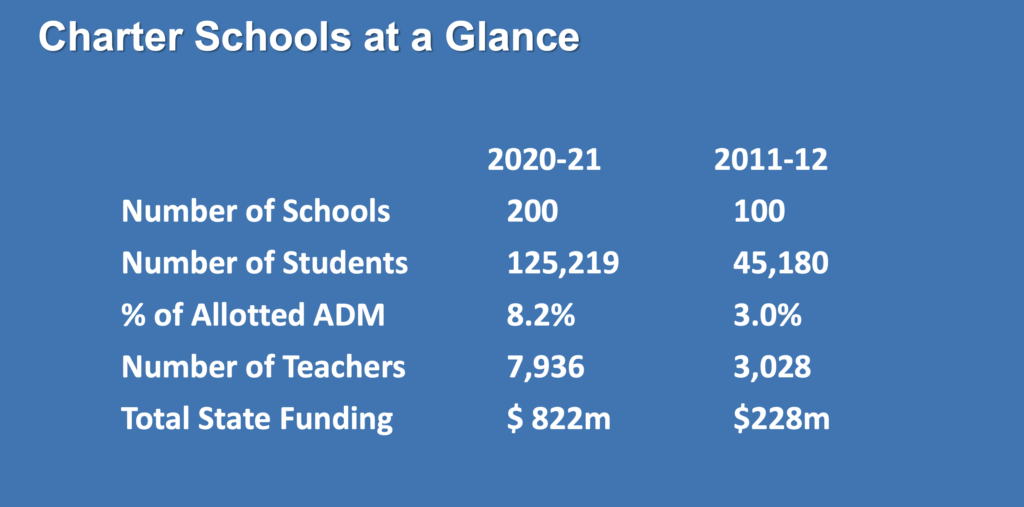

Between the 2011-12 and 2020-21 school years, the total state funding going to charter schools has more than tripled, while the number of schools has doubled and the number of students has nearly tripled.
According to Schauss, the charter school funding timeline begins in the summer before the school year.
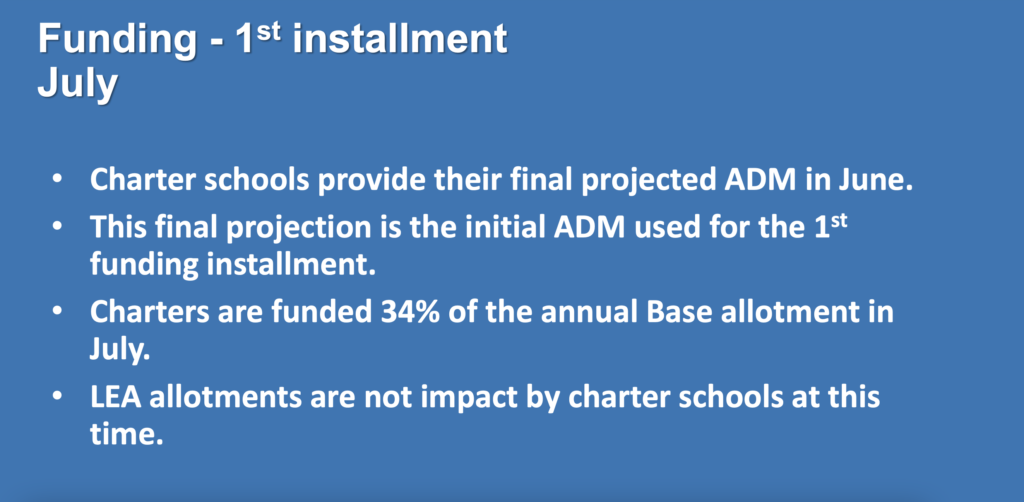

Next, in November, the annual allotment is recalculated based on the actual average daily membership (ADM) for the first month of school, rather than what it was projected to be. Average daily membership is a way of determining how many students are going to school in any given month. It basically takes the number of school days for which students were in attendance and divides this by the number of days in the month to get an average.
So, using that first month of average daily membership, charters are then allocated money based on their population. As you can see in the slide below, charters are given different percentages of their annual allotments based on various factors.
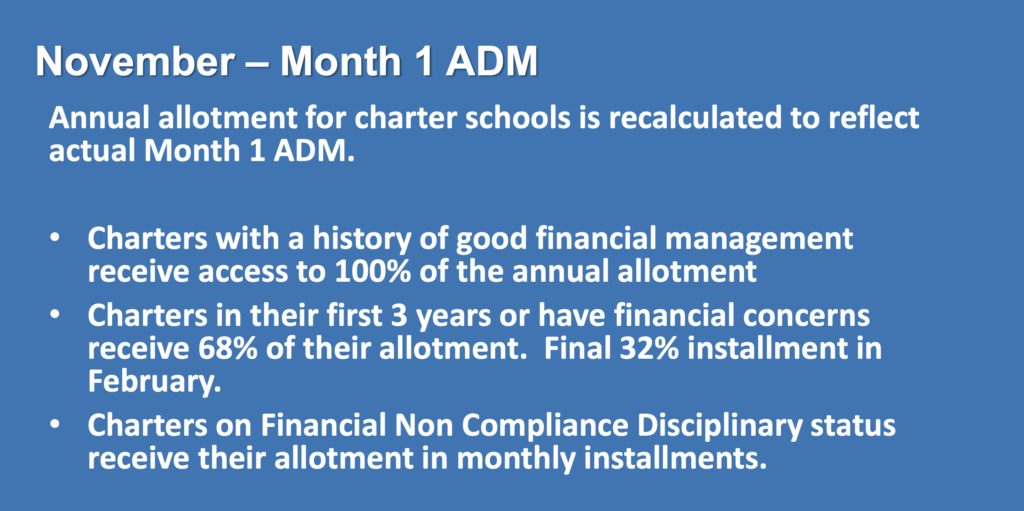

This process creates a problem. Remember that funding for districts and charter schools alike is based on ADM. But, since projected ADM and actual ADM for a charter school could be different, and because projected ADM for “new and high growth charter schools” is included in the district ADM, districts don’t actually know how much money they’re going to have to give a charter school until well into the school year, making it harder to plan their own budgets.
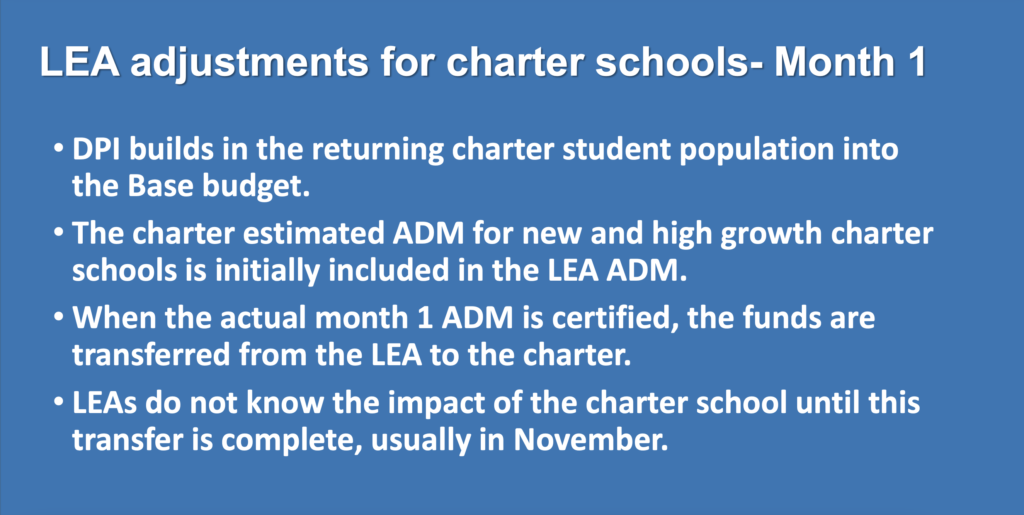

Board Member Wendell Hall summed up the issue this way:
“The funding model that we have used in the past is no longer working for us today because of the increase in the number of charter schools,” he said.
White, the chair of the committee which brought forth the presentation from Schauss, said the impetus for this was concern from charter schools about funding this year. She said charter school leaders have been coming to her saying that fewer students had come to school at the beginning of the year than they had projected. She said the leaders thought this was because charters didn’t have a virtual option due to an oversight in state law that was rectified only after the start of the school year.
Board members asked Schauss about possible fixes. Schauss said she could come up with something to present to the Board before the short session this spring. State Superintendent of Public Instruction Catherine Truitt said that any major changes in how the state does school funding are unlikely in the short session but said she would be interested to hear about a possible temporary, short-term fix prior to the short session. White said that charter leaders are looking for a short-term fix to address what has happened this year.
Federal funds
The Board also heard a presentation about how the various buckets of federal COVID-19 funds have been spent and allocated. See that presentation below.
Check out the full State Board agenda and documents from their October meeting here.



